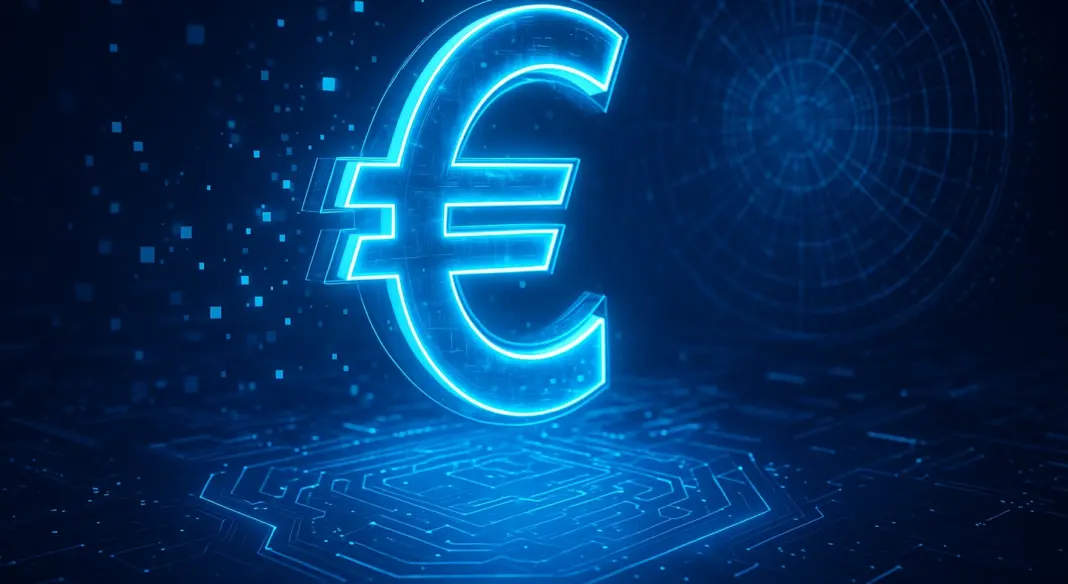If you thought cash was dead, wait till the European Central Bank drops its digital euro on us in 2029, assuming those lawmakers can finally agree on the rules.
The ECB’s been tinkering with this idea since 2020, and after years of politicking, privacy debates, and eyebrow-raising privacy concerns, the digital euro’s launch date is tentatively set for the heat of 2029.
Stay ahead in the crypto world – follow us on X for the latest updates, insights, and trends!🚀
Making digital cash a reality
Behind the scenes, the ECB wrapped up the so-called preparation phase this month and continues gearing up, with further work scheduled this week in Italy.
It’s a diplomatic dance of sorts, hoping lawmakers hammer out a legal framework before the clock runs out.
We’re talking about a few years of nail-biting legislative drama ahead, all aimed at making digital cash a reality across the EU.
The digital euro promises to make life easier when your ATM’s out of order post-apocalypse, war, cyberattacks, or good old-fashioned chaos.
ECB board member Piero Cipollone threw his hat in the ring, predicting Parliament’s nod by May 2026, a critical milestone paving the way for Europeans to enjoy free, universally accepted digital payments.
Government misuse, total control
But not everyone’s popping the champagne. Banks, politicians, and even everyday users are scratching their heads over privacy, fear of surveillance, and new avenues for government misuse.
The EU parliament’s been dragging its feet since 2023, delayed by political wrangling and election distractions.
Push money into programmable tokens
Globally, Europe isn’t the only kid on the digital block. According to the Atlantic Council, only Nigeria, the Bahamas, and Jamaica have jumped into the CBDC pool with full launch, with about 49 other countries in pilot limbo.
The Human Rights Foundation’s CBDC tracker praises the tech for boosting payment efficiency and bringing more people into the financial fold.
Oh, the irony. Shadows loom, privacy invasions and risks of corruption work as unwelcome counterweights.
Europe’s digital euro is the next act in a global push to turn government-issued money into 24/7 programmable tokens.
It’s the grand experiment trying to bring ancient coins kicking and screaming into the digital age, with all the drama of politics, tech, and human skepticism tangled in the mix.
Are you ready to pay with the euro’s digital twin? The future might land in your pocket by 2029, complete with the usual bureaucratic flair and a dash of uncertainty.
💬 Editor’s Take:
It’s wild to think we could be using a digital euro before the decade’s out.
On paper, it sounds sleek — instant payments, no bank fees, no middlemen. But peel back the marketing and you’ll find the real tension: convenience versus control.
If governments can see and “program” every euro, what’s left of financial freedom?
The idea isn’t bad — it’s progress. But like all revolutions, it depends on who holds the reins.
Europe’s digital cash future might feel modern, but it’s walking a tightrope between innovation and surveillance.
You may be interested in: With their giant moves, the whales are the real force behind the market performance?
Disclosure:This article does not contain investment advice or recommendations. Every investment and trading move involves risk, and readers should conduct their own research when making a decision.
Kriptoworld.com accepts no liability for any errors in the articles or for any financial loss resulting from incorrect information.
Cryptocurrency and Web3 expert, founder of Kriptoworld
LinkedIn | X (Twitter) | More articles
With years of experience covering the blockchain space, András delivers insightful reporting on DeFi, tokenization, altcoins, and crypto regulations shaping the digital economy.
📅 Published: November 1, 2025 • 🕓 Last updated: November 1, 2025
✉️ Contact: [email protected]


